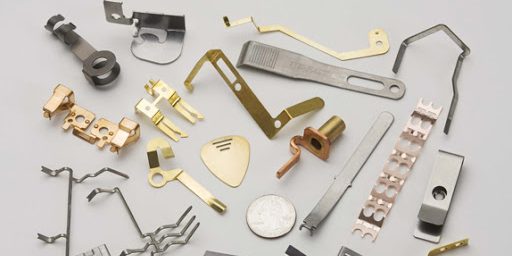Stamping parts are the forming and processing methods of workpieces (stamping parts) with required shape and size by applying external forces on plates, strips, pipes and profiles by presses and dies to cause plastic deformation or separation. Stamping and forging belong to plastic processing (or pressure processing), which is called forging. Stamped blanks are mainly hot-rolled and cold-rolled steel plates and strips.
Stamping parts
In the world, 60~70% of steel products are plates, most of which are finished products after stamping. The car body, chassis, fuel tank, radiator sheet, boiler drum, container shell, motor, electrical iron core silicon steel sheet, etc. are all processed by stamping. Instruments, household appliances, bicycles, office machinery, household utensils and other products also have a large number of stamping parts.
Compared with castings and forgings, stamping parts are thin, uniform, light and strong. Stamping can produce workpieces with stiffeners, ribs, undulations or flanging that are difficult to manufacture by other methods to improve their rigidity. Due to the use of precision die, the precision of the workpiece can reach the micron level, and the repetition precision is high, the specification is consistent, and the holes and sockets, bosses, etc. can be punched.
Cold stamping parts are generally no longer subject to machining, or only require a small amount of machining. The precision and surface condition of hot stamping parts are lower than those of cold stamping parts, but they are still better than castings and forgings, with less machining.
Stamping is an efficient production method. Using compound die, especially multi position progressive die, multiple stamping processes can be completed on one press to realize fully automatic production from strip uncoiling, leveling, blanking to forming and finishing. High production efficiency, good working conditions, low production cost, generally hundreds of pieces can be produced per minute.
Stamping is mainly classified by process, which can be divided into two categories: separation process and forming process. The separation process is also called blanking, which aims to separate the stamping parts from the sheet metal along a certain contour line and ensure the quality requirements of the separation section. The surface and internal properties of the sheet metal used for stamping have a great impact on the quality of the finished stamping products. It is required that the thickness of the stamping material be accurate and uniform; The surface shall be smooth and clean without spot, scar, scratch, surface crack, etc; The yield strength is uniform without obvious directivity; High uniform elongation; Low yield ratio; Low work hardening.






